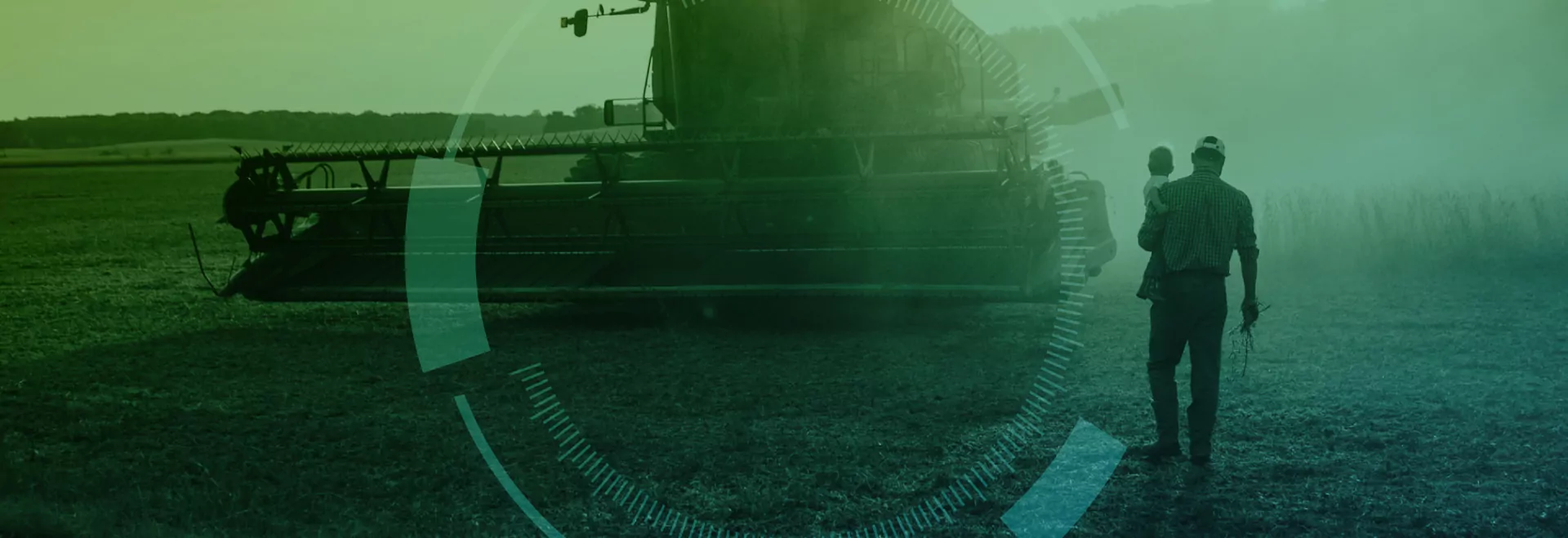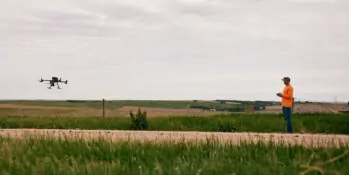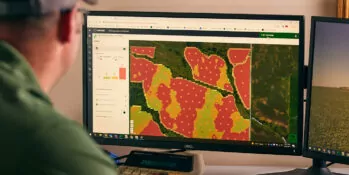

The adoption of precision scouting and artificial intelligence thrived in 2020 and is poised to continue transforming the agriculture industry in the years to come. While it’s no secret that growers and advisors are increasingly turning to technology solutions for their acres, the partnership between Ohio-based Integrated Ag Services and The Ohio State University (OSU) is taking precision scouting to new heights through a comprehensive study using Taranis SmartScout services to monitor and analyze the fields at OSU’s Molly Caren Agricultural Center.
We had the opportunity to connect with Nate Douridas, farm manager at the Molly Caren Ag Center OSU, and JD Bethel, a crop consultant at Integrated Ag to discuss how the team is using Taranis insights to guide the decision-making process throughout the trial.
Douridas: Integrated Ag has served as our crop advisor for over a decade now and they’ve been with us for every step of the process during the season, from helping us with scouting to data analysis and building out prescription plans. As the manager on the farm, working with a certified crop advisor like JD has allowed me to dedicate more of my time to come up with rapid solutions and help minimize long-term risk. The pitch to use Taranis for this trial really took things to the next level and has been crucial in the decision-making process. The trial is now entering in its second year and we’re using the Taranis AI precision-scouting software to provide high resolution drone images and insights through every stage of the growing season. With the images, the software can then compare it to what’s in the existing database – such as insects, weeds, nutrient deficiencies, etc. – to produce an in-depth and actionable scouting report.

Our goal is to stay ahead of common crop threats and use the proper applications where necessary, and Taranis does that by catching these issues early enough so that we’re able to go into the fields and treat them. In the end, this will help our ROI by saving money on inputs, as well as preserve time and other resources.
Bethel: We’ve been working with Taranis for about four years now and have really seen a huge impact on what the technology offers to our growers – from a management and environmental standpoint to being cost-effective by using less products and increasing yields. We saw the actionable data that the Taranis platform produces right away, and there’s nothing else on the market that compares to it. The hi-res drone imagery that Taranis produces allows us to pinpoint areas where we need to tackle problem areas in a matter of minutes, whereas manual field scouting can take hours. It has allowed us as trusted crop advisors to help growers, like Nate, make educated management decisions instead of acting on emotions alone. We knew early on that using Taranis throughout this trial would give us some great in-depth insights and data points while streamlining the scouting process to make it much more efficient.
Douridas: The trial will focus on soybeans this year as part of a corn/soybean rotation. We will use a 500-acre plot that is broken down into multiple management blocks: one randomized, one using a standard scouting management plan, and one using Taranis. The study is unique in that the management blocks are much larger than what other universities may use for research. The approach to have randomized management blocks also allows for us to capture and analyze more well-rounded data points.


Bethel: We will conduct about six or seven drone passes in the designated management blocks – about every 14-18 days – from the start of planting season (April 25th – May 10th) through August. The first flight, which will be scheduled right after planting, is essential because we look at the crop densities to make sure there’s enough in the fields to maximize yield. This will really drive the decision to either continue ahead with the crop or replant. From there, we work through weed control and look at different strategies for herbicide applications, insect threats and diseases throughout the growing season; it’s key to monitor soybeans about two to three weeks until harvest because they are more susceptible to diseases and other threats.

Douridas: Last year, our main challenge was dealing with a localized drought that made using our applications much more difficult. Going along with that, we’ve encountered ongoing challenges with weeds becoming more resistant to herbicides. We have plenty of applications that work well on corn, but soybeans are more challenging. Taranis really helps in tackling these issues and allows us to make quicker decisions than what we would normally be able to do with your standard scouting process. Last year, Taranis helped us identify some weeds that emerged late in the season that needed treatment that we otherwise could not have made with a standard management plan.
Bethel: The drought really skewed the data points and only produced about two-thirds of what the yields should have been. Like Nate said, we dealt with some weeds that emerged late, and we had to shift our strategy a bit to manage how we would use post-emerge herbicide applications to still set the crop up for success. We normally would only go in around this time of the growing season with one post-emerge application, but using Taranis enabled us to do things slightly different in a more timely and cost-effective manner. When we flew the field and the scouting reports came back that there were weeds, we used insights from a heat map generated by the Taranis platform to guide us where to place the variable spray application. We used this on about 50% of the block and we saw how this precision scouting tool presents a real opportunity for input cost savings for growers. There are more opportunities with soybeans where we can go in and make these types of post applications, whereas with corn, we encounter challenges such as possibly running the crop over. Going into this year, we’re optimistic about the soybean crop and we will continue to use Taranis to generate well-rounded insights to make the most informed decisions moving forward.
Like most studies in the industry, the effectiveness of the scouting program will continue over the course of several growing seasons. For more information on Integrated Ag Services, visit their website: https://integratedag.net/. For more information on The Ohio State University’s Molly Caren Agricultural Center, please visit: https://fsr.osu.edu/node/77.

Welcome to the third and final blog in the series about AI in Agriculture, inspired by the white paper Agriculture and Artificial Intelligence: How to Effectively Implement AI in Precision Agriculture.

In this blog, we will focus on the singular aspects of the agriculture industry that make the application of AI methodologies more complex than in other industries.

This is the first blog in a series where we will discuss AI technology and how to apply it to Precision Agriculture methodologies and how, ultimately, AI can take your farm to a new level of efficiency and prosperity.